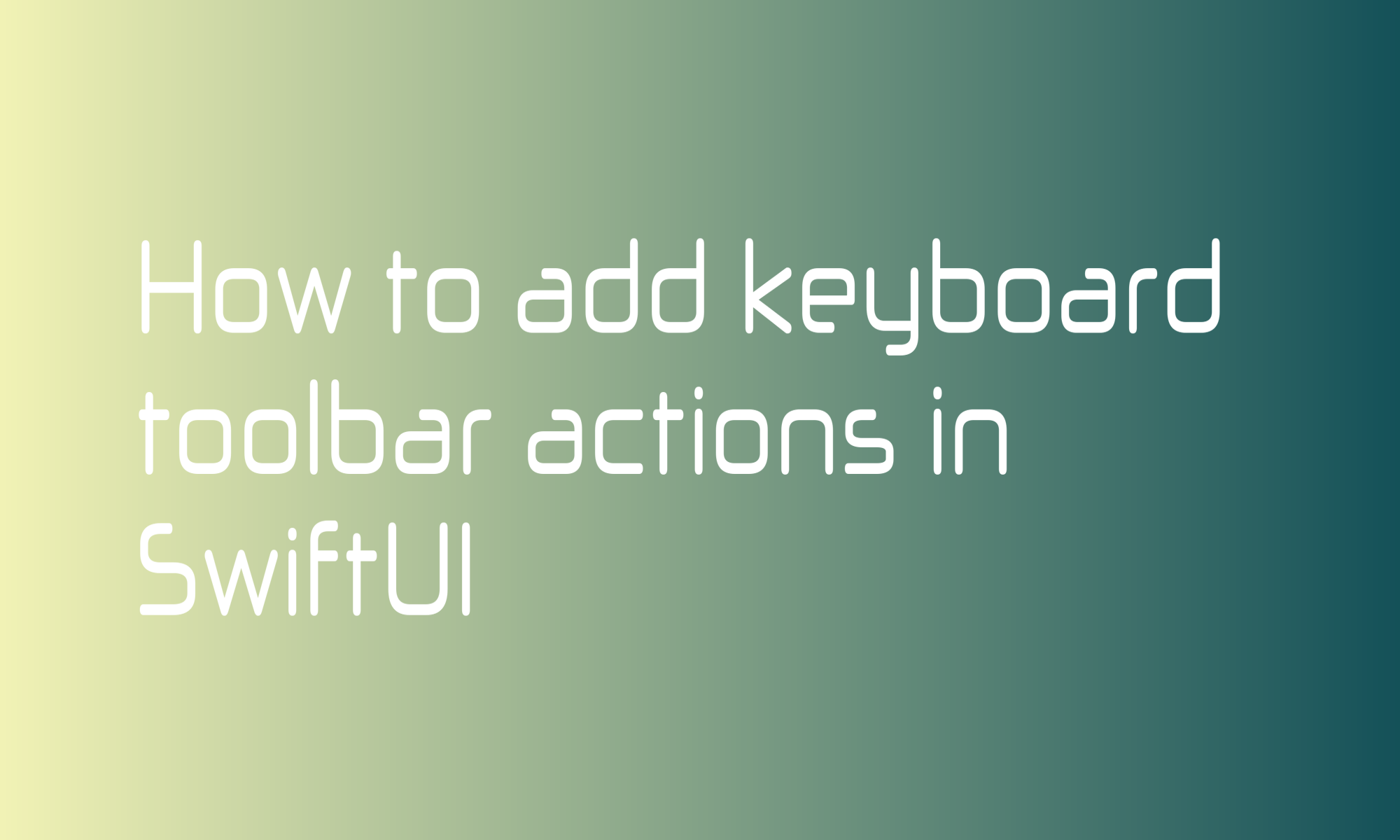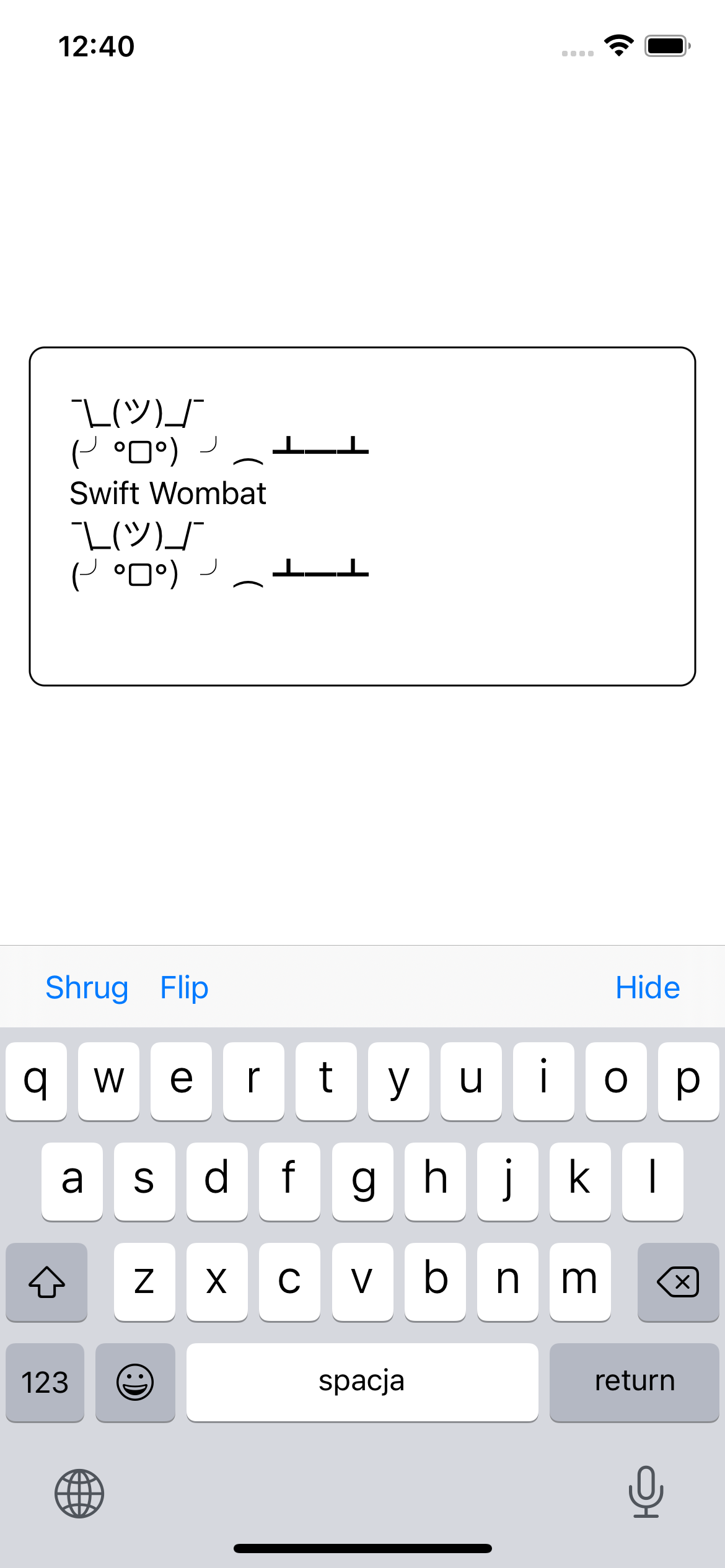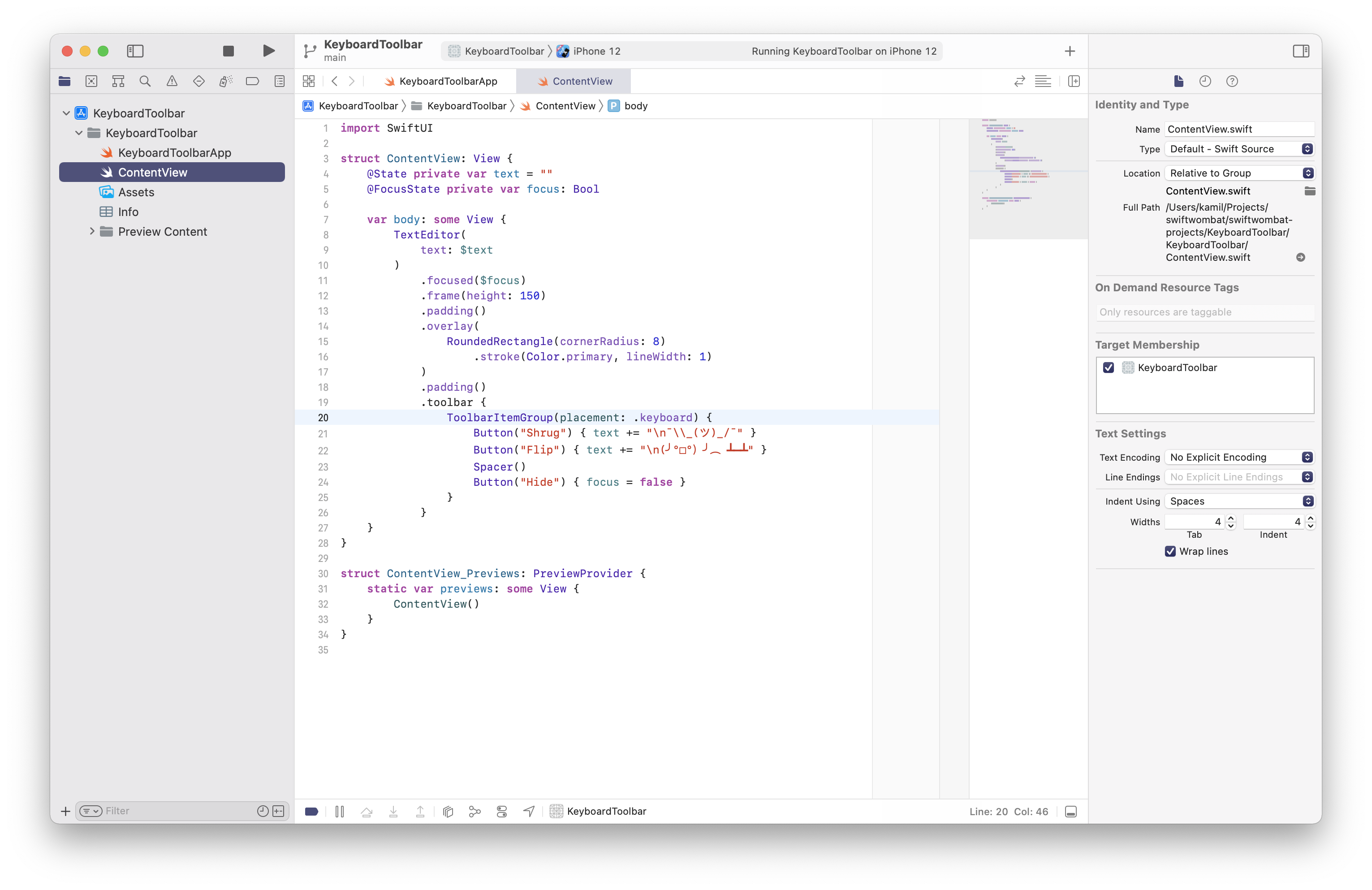
SwiftUI contains a clever mechanism for adding toolbar actions. With one view modifier - toolbar, we can control toolbar items in different places of the application. It doesn’t matter that you want to add a toolbar to the macOS navigation bar, iOS navigation bar, or iOS bottom bar; you will always start with .toolbar { }.
SwiftUI 3 brings additional, longly awaited functionality - the possibility to displays toolbar actions above the system keyboard. You probably expect that already, but adding views to the keyboard toolbar is also very easy. Let’s take a look at a provided example.

To show this functionality, I created a small project with the TextEditor and three keyboard actions - two of them put ASCI emojis in TextEditor, and the third one hides the keyboard.
struct ContentView: View {
@State private var text = ""
@FocusState private var focus: Bool
var body: some View {
TextEditor(text: $text)
.focused($focus)
.frame(height: 150)
.padding()
.overlay(
RoundedRectangle(cornerRadius: 8)
.stroke(Color.primary, lineWidth: 1)
)
.padding()
}
}
Code above displays TextEditor with some basic styling for better visibility. I also added the @FocusState property wrapper, which helps programmatically displaying and hiding the keyboard. The @FocusState is also a new addition in SwiftUI 3, but I’ll prepare a separate article about it.
.toolbar {
ToolbarItemGroup(placement: .keyboard) {
Button("Shrug") { text += "\n¯\\_(ツ)_/¯" }
Button("Flip") { text += "\n(╯°□°)╯︵ ┻━┻" }
Spacer()
Button("Hide") { focus = false }
}
}
I told you it would be simple. In the content of the toolbar view modifier, you have to put ToolbarItemGroup view with placement parameter set to keyboard. You can place any View in the content ViewBuilder of ToolbarItemGroup. Usually, you will want to use Buttons and Spacers to align them properly.
The first two buttons modify text property by adding correct ASCI characters; the third sets focus property to false. Calling this will hide the keyboard if it’s visible.
Below you can find the complete code of this experiment and a link to the Xcode project.
import SwiftUI
struct ContentView: View {
@State private var text = ""
@FocusState private var focus: Bool
var body: some View {
TextEditor(text: $text)
.focused($focus)
.frame(height: 150)
.padding()
.overlay(
RoundedRectangle(cornerRadius: 8)
.stroke(Color.primary, lineWidth: 1)
)
.padding()
.toolbar {
ToolbarItemGroup(placement: .keyboard) {
Button("Shrug") { text += "\n¯\\_(ツ)_/¯" }
Button("Flip") { text += "\n(╯°□°)╯︵ ┻━┻" }
Spacer()
Button("Hide") { focus = false }
}
}
}
}
